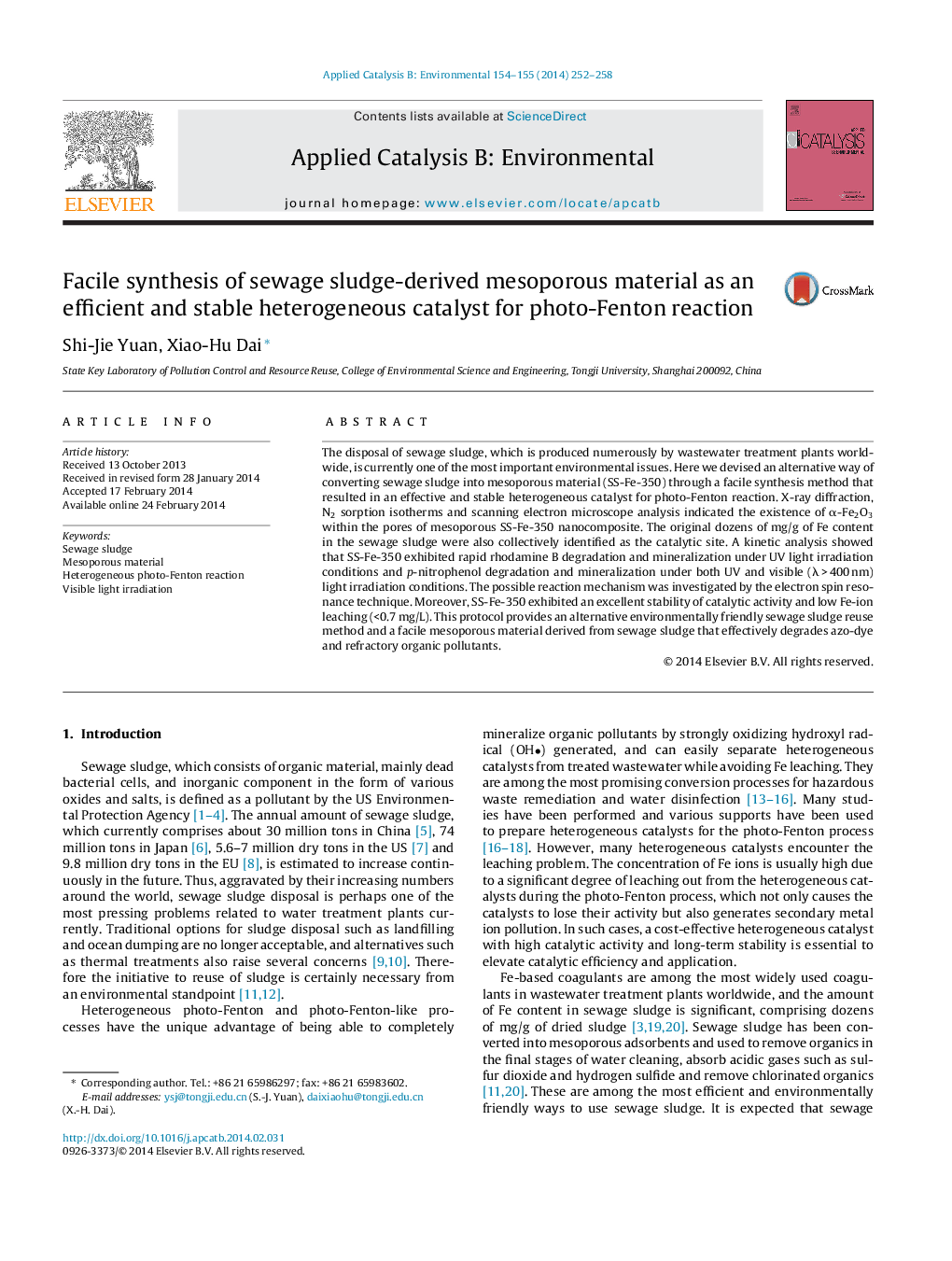| کد مقاله | کد نشریه | سال انتشار | مقاله انگلیسی | نسخه تمام متن |
|---|---|---|---|---|
| 45062 | 46395 | 2014 | 7 صفحه PDF | دانلود رایگان |
• Sewage sludge-derived mesoporous catalyst is used for heterogeneous Fenton reaction.
• The catalyst exhibited excellent activity under both UV and vis light irradiation.
• Original Fe content in sludge is collectively identified as the catalytic site.
• Chemical bonds ensured the low Fe leaching and the stability of the catalysts.
The disposal of sewage sludge, which is produced numerously by wastewater treatment plants worldwide, is currently one of the most important environmental issues. Here we devised an alternative way of converting sewage sludge into mesoporous material (SS-Fe-350) through a facile synthesis method that resulted in an effective and stable heterogeneous catalyst for photo-Fenton reaction. X-ray diffraction, N2 sorption isotherms and scanning electron microscope analysis indicated the existence of α-Fe2O3 within the pores of mesoporous SS-Fe-350 nanocomposite. The original dozens of mg/g of Fe content in the sewage sludge were also collectively identified as the catalytic site. A kinetic analysis showed that SS-Fe-350 exhibited rapid rhodamine B degradation and mineralization under UV light irradiation conditions and p-nitrophenol degradation and mineralization under both UV and visible (λ > 400 nm) light irradiation conditions. The possible reaction mechanism was investigated by the electron spin resonance technique. Moreover, SS-Fe-350 exhibited an excellent stability of catalytic activity and low Fe-ion leaching (<0.7 mg/L). This protocol provides an alternative environmentally friendly sewage sludge reuse method and a facile mesoporous material derived from sewage sludge that effectively degrades azo-dye and refractory organic pollutants.
Figure optionsDownload as PowerPoint slide
Journal: Applied Catalysis B: Environmental - Volumes 154–155, July–August 2014, Pages 252–258
